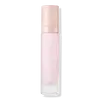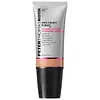What's inside
What's inside
 Key Ingredients
Key Ingredients

 Benefits
Benefits

 Concerns
Concerns

 Ingredients Side-by-side
Ingredients Side-by-side

Water
Skin ConditioningDimethicone
EmollientErythritol
HumectantPentylene Glycol
Skin ConditioningGlycerin
HumectantCetyl PEG/PPG-10/1 Dimethicone
EmulsifyingPolymethylsilsesquioxane
Pentaerythrityl Tetraisostearate
EmollientIsododecane
EmollientTrimethylsiloxysilicate
EmollientNylon-12
Polymethyl Methacrylate
Sodium Chloride
MaskingPhenoxyethanol
PreservativeHydroxyacetophenone
AntioxidantMagnesium Sulfate
Polysilicone-11
Disteardimonium Hectorite
StabilisingSodium Hyaluronate
HumectantTocopheryl Acetate
AntioxidantPropylene Carbonate
SolventParfum
MaskingBiosaccharide Gum-4
Skin ConditioningLaureth-12
EmulsifyingVitis Vinifera Seed Oil
EmollientTriethoxycaprylylsilane
CI 77007
Cosmetic ColorantCI 15850
Cosmetic ColorantWater, Dimethicone, Erythritol, Pentylene Glycol, Glycerin, Cetyl PEG/PPG-10/1 Dimethicone, Polymethylsilsesquioxane, Pentaerythrityl Tetraisostearate, Isododecane, Trimethylsiloxysilicate, Nylon-12, Polymethyl Methacrylate, Sodium Chloride, Phenoxyethanol, Hydroxyacetophenone, Magnesium Sulfate, Polysilicone-11, Disteardimonium Hectorite, Sodium Hyaluronate, Tocopheryl Acetate, Propylene Carbonate, Parfum, Biosaccharide Gum-4, Laureth-12, Vitis Vinifera Seed Oil, Triethoxycaprylylsilane, CI 77007, CI 15850
Water
Skin ConditioningGlycerin
HumectantButylene Glycol
HumectantIsononyl Isononanoate
EmollientCitrus Aurantium Bergamia Fruit Water
Skin ConditioningDimethicone
EmollientButyrospermum Parkii Butter
Skin ConditioningCaprylic/Capric Triglyceride
MaskingGlyceryl Stearate
EmollientPolyglyceryl-6 Distearate
EmulsifyingCetearyl Alcohol
EmollientSorbitan Stearate
EmulsifyingIsostearyl Alcohol
EmollientMica
Cosmetic ColorantButylene Glycol Cocoate
EmulsifyingBacillus/Soybean Ferment Extract
Skin ConditioningDiamond Powder
AbrasiveNiacinamide
SmoothingSodium Hyaluronate
HumectantSodium Hydroxide
BufferingCitric Acid
BufferingGlutamic Acid
HumectantGlycine
BufferingHistidine
HumectantIsoleucine
Skin ConditioningLeucine
Skin ConditioningLysine
Skin ConditioningPhenylalanine
MaskingAlanine
MaskingArginine
MaskingProline
Skin ConditioningSerine
MaskingThreonine
Tyrosine
MaskingValine
MaskingSodium Phytate
Sodium Lactate
BufferingSilica
AbrasiveEthylcellulose
Potassium Sorbate
PreservativeSodium Benzoate
MaskingHydroxyethylcellulose
Emulsion StabilisingAspartic Acid
MaskingDisodium Phosphate
BufferingPolysorbate 60
EmulsifyingSodium Phosphate
BufferingPolysilicone-11
Titanium Dioxide
Cosmetic ColorantEthylhexylglycerin
Skin ConditioningDimethicone Crosspolymer
Emulsion StabilisingCarbomer
Emulsion StabilisingPolymethylsilsesquioxane
Iron Oxides
Phenoxyethanol
PreservativeWater, Glycerin, Butylene Glycol, Isononyl Isononanoate, Citrus Aurantium Bergamia Fruit Water, Dimethicone, Butyrospermum Parkii Butter, Caprylic/Capric Triglyceride, Glyceryl Stearate, Polyglyceryl-6 Distearate, Cetearyl Alcohol, Sorbitan Stearate, Isostearyl Alcohol, Mica, Butylene Glycol Cocoate, Bacillus/Soybean Ferment Extract, Diamond Powder, Niacinamide, Sodium Hyaluronate, Sodium Hydroxide, Citric Acid, Glutamic Acid, Glycine, Histidine, Isoleucine, Leucine, Lysine, Phenylalanine, Alanine, Arginine, Proline, Serine, Threonine, Tyrosine, Valine, Sodium Phytate, Sodium Lactate, Silica, Ethylcellulose, Potassium Sorbate, Sodium Benzoate, Hydroxyethylcellulose, Aspartic Acid, Disodium Phosphate, Polysorbate 60, Sodium Phosphate, Polysilicone-11, Titanium Dioxide, Ethylhexylglycerin, Dimethicone Crosspolymer, Carbomer, Polymethylsilsesquioxane, Iron Oxides, Phenoxyethanol
Ingredients Explained
These ingredients are found in both products.
Ingredients higher up in an ingredient list are typically present in a larger amount.
Dimethicone is a type of synthetic silicone created from natural materials such as quartz.
What it does:
Dimethicone comes in different viscosities:
Depending on the viscosity, dimethicone has different properties.
Ingredients lists don't always show which type is used, so we recommend reaching out to the brand if you have questions about the viscosity.
This ingredient is unlikely to cause irritation because it does not get absorbed into skin. However, people with silicone allergies should be careful about using this ingredient.
Note: Dimethicone may contribute to pilling. This is because it is not oil or water soluble, so pilling may occur when layered with products. When mixed with heavy oils in a formula, the outcome is also quite greasy.
Learn more about DimethiconeGlycerin is already naturally found in your skin. It helps moisturize and protect your skin.
A study from 2016 found glycerin to be more effective as a humectant than AHAs and hyaluronic acid.
As a humectant, it helps the skin stay hydrated by pulling moisture to your skin. The low molecular weight of glycerin allows it to pull moisture into the deeper layers of your skin.
Hydrated skin improves your skin barrier; Your skin barrier helps protect against irritants and bacteria.
Glycerin has also been found to have antimicrobial and antiviral properties. Due to these properties, glycerin is often used in wound and burn treatments.
In cosmetics, glycerin is usually derived from plants such as soybean or palm. However, it can also be sourced from animals, such as tallow or animal fat.
This ingredient is organic, colorless, odorless, and non-toxic.
Glycerin is the name for this ingredient in American English. British English uses Glycerol/Glycerine.
Learn more about GlycerinPhenoxyethanol is a preservative that has germicide, antimicrobial, and aromatic properties. Studies show that phenoxyethanol can prevent microbial growth. By itself, it has a scent that is similar to that of a rose.
It's often used in formulations along with Caprylyl Glycol to preserve the shelf life of products.
Polymethylsilsesquioxane is a silicone used as a film forming agent.
When applied to the skin, this ingredient creates an invisible film on the surface. This film still allows oxygen to pass through, but prevents moisture from escaping. This can help condition and hydrate the skin. It also leaves a silky feel when applied.
Polymethylsilsesquioxane has not been shown to clog pores. It has been deemed safe to use up to 55%, but most cosmetics use much less.
If you have concerns about using this ingredient, we recommend speaking with a professional.
Learn more about PolymethylsilsesquioxanePolysilicone-11 is a film-forming silicone that creates a non-tacky and matte finish on the skin. It's commonly used to improve texture, absorb excess oil, and help active ingredients spread evenly.
Due to its "rubber-like" structure, it stays on the skin's surface instead of being absorbed. On the skin, it creates a flexible layer that enhances wearability and stability.
Sodium Hyaluronate is hyaluronic acid's salt form. It is commonly derived from the sodium salt of hyaluronic acid.
Like hyaluronic acid, it is great at holding water and acts as a humectant. This makes it a great skin hydrating ingredient.
Sodium Hyaluronate is naturally occurring in our bodies and is mostly found in eye fluid and joints.
These are some other common types of Hyaluronic Acid:
Learn more about Sodium HyaluronateWater. It's the most common cosmetic ingredient of all. You'll usually see it at the top of ingredient lists, meaning that it makes up the largest part of the product.
So why is it so popular? Water most often acts as a solvent - this means that it helps dissolve other ingredients into the formulation.
You'll also recognize water as that liquid we all need to stay alive. If you see this, drink a glass of water. Stay hydrated!
Learn more about Water